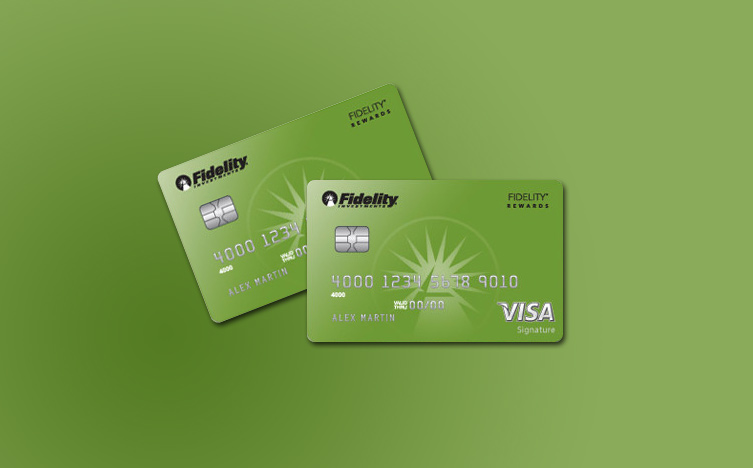How to Cut College Cost with Fidelity Rewards Credit Card

Want to turbo boost your 529 savings plan by thousands of dollars in the next few years?
The Fidelity Rewards Visa Signature credit card can help.
For the first time, you can save 2% cash back with the Fidelity Rewards Visa Signature card. That’s the highest cash-back rate of any credit card in the United States. What’s even better: you get your savings tax-free.
Here’s how it works. The Fidelity Rewards Visa Signature card awards an unlimited flat rate of 2% cash back on all purchases you make with your credit card. There are no limits, no exceptions. All of your cash back rewards go straight into your 529 savings account, where they can grow tax-free.
So what kind of impact can 2% cash-back savings have on your 529 savings plan? Check out the chart below:
How cash back rewards can increase college savings with fidelity
| Monthly Card Expenses | Cash Back | 1-Year | 5-Year | 10-Year |
|---|---|---|---|---|
| $500 /$6,000 | $10/$120 | $127 | $717 | $1,677 |
| $1,000/$12,000 | $20/$240 | $254 | $1,434 | $3,353 |
| $5,000/$60,000 | $100/$1,200 | $1,272 | $7,170 | $16,766 |
Redeeming that Cash-back
There are a few different ways to redeem the cash-back rewards, but for college savings, you can get the cash-back deposited directly into a Fidelity-managed 529 savings plan. The amount you earn from a 529 savings plan is dependent on your plan’s state, with some averaging around 2% up to 6% and higher. When you compare that amount to most savings accounts that only earn less than 1%, the Fidelity Rewards Visa Signature card is clearly a better option.
Tax-free? Yes Please!
Cash back rewards from the Fidelity Rewards Visa Signature card are not taxable by the IRS. They are considered rebates on your credit card spending. Therefore, your contributions into the 529 savings plans are tax-free.
Furthermore, money in a 529 savings plan can be spent tax-free for college expenses.
Essentially, you don’t pay any taxes while using the card to build college savings for your child.
Increase Your College Savings
Let’s look at the chart below one more time to see the amount of savings potential you have:
How cash back rewards can increase college savings with fidelity
| Monthly Card Expenses | Cash Back | 1-Year | 5-Year | 10-Year |
|---|---|---|---|---|
| $500 /$6,000 | $10/$120 | $127 | $717 | $1,677 |
| $1,000/$12,000 | $20/$240 | $254 | $1,434 | $3,353 |
| $5,000/$60,000 | $100/$1,200 | $1,272 | $7,170 | $16,766 |
As you can see, you don’t have to use your card much to earn a good-sized monthly contribution. Just using your card for your everyday purchases like gas and groceries every month (don’t forget to pay the balance before the end of the billing cycle), you can build a significant savings account for your child. Your future checking account - and your child! - will thank you.
What Is a 529 Plan?
A 529 plan is a savings plan intended to encourage people to save for future college costs. These plans are also often referred to as “qualified tuition plans” and are sponsored by states, state agencies, and many different educational institutions. You can set up a 529 savings plan with a particular state, even if you don’t reside in that state, but each state plus the District of Columbia, offers, at least, one type of these plans.
How it Works
Besides the ability to earn more with a 529 plan than you would with a regular savings account at a bank, 529 plans come with other benefits. Unlike prepaid tuition plans, college savings plans are designed to help out with all education expenses, including tuition, room and board, books, computers, and other fees that come with college.
When choosing a savings plan for your student, it’s important that you consider all of the costs that might be included, in addition to the school’s tuition. And, you don’t want to end up paying into a savings plan that doesn’t cover some of the extra expenses that students have.
Other benefits of a 529 plan include the ability to contribute to a plan in another state without being a resident of that state. Plus, 529 college savings plans are open to all ages, including adults and children, and if one student doesn’t need the entire amount saved, you can often change the name to another student or beneficiary.
Tax-free Spending
There are also tax advantages to 529 plans. For instance, you can contribute after-tax dollars specifically for higher education costs. Distributions for those expenses are also free of federal income tax, although the tax savings might be different according to your state.
Many states offer tax deductions up to the full amount of the annual contribution to any state’s program, even if it isn’t the state you currently reside in. The tax implications of 529 savings plans by themselves can help parents and grandparents save thousands of dollars, which can help the college student as well anyone helping them get through their educations, with as little a debt burden as possible.
When it comes to preparing for the college expenses, there’s no shortage of helpful budgeting information. But you can also give your student a boost with a cash rewards credit card, especially if it focuses on saving for college through a 529 plan.
This way, you not only earn a little bit extra when you use your card for your day-to-day spending. You’re also putting away valuable cash rewards that can help your child with the overwhelming expense of higher education.

